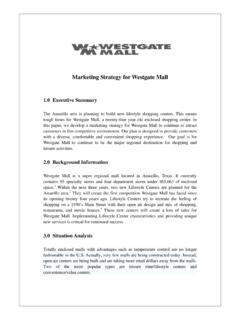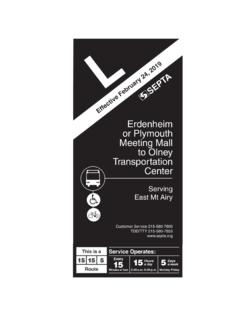Transcription of Book Title/Author Ivan the Remarkable True Story …
1 Book Title/Author Ivan the Remarkable true Story of the shopping mall Gorilla by Katherine Applegate Florida State Standards Priority Standard: Describe the overall structure of a Story , including describing how the beginning introduces the Story and the ending concludes the action. Supporting Standards: Ask and answer such questions as who, what, where, when, why, and how to demonstrate understanding of key details in a text. Describe how characters in a Story respond to major events and challenges. Use information gained from the illustrations and words in a print or digital text to demonstrate understanding of its characters, setting, or plot. Write narratives in which they recount a well-elaborated event or short sequence of events, include details to describe actions, thoughts, and feelings, use temporal words to signal event order, and provide a sense of closure. With guidance and support from adults and peers, focus on a topic and strengthen writing as needed by revising and editing.
2 Demonstrate command of the conventions of standard English grammar and usage when writing or speaking. Demonstrate command of the conventions of standard English capitalization, punctuation, and spelling when writing. Preparation/Resources Needed Book Ivan the Remarkable true Story of the shopping mall Gorilla Genre nonfiction AR/Lexile Level available Reading Content Focus Sequence events in nonfiction text written as a narrative Vocabulary Remarkable , gorilla, poachers, traveled, strange, shimmer, petitions, protests, gleaming Essential Questions *How does identifying the major events in a Story help in retelling? *Why are temporal words needed when retelling a Story ? *Why is it important to help animals who are illegally hunted or captured? Big Idea *After identifying the major events, students can write complete to summarize a Story . *Temporal words (ex: first, next, finally) are time words that signal when events in a Story have changed. *If we don t help these animals, they may become extinct.
3 Differentiation (Access and Enrichment) Access - provide students with temporal words (first, next, last) and/or sentence stems to guide rewriting of Story when using the identified events in timeline (Flow Map). Some students may need additional one-on-one support from teacher or peers in creating their folded books. Internet Resources San Diego Zoo Website Directions for a folded book Video of author telling the Story of Ivan and sharing real pictures. Enrichment Have students write more than one sentence when retelling the major events of the Story as written on each page of their little book. Encourage students to use adjectives in their writing. Allow students to complete independent research on gorillas and their habitats. Then have them create a poster for gorilla awareness. YouTube Video of Ivan living at the shopping mall . YouTube Video of Ivan living at the zoo Use critical thinking questions to assist in guiding discussions. We Love Ivan page Baby Gorilla Rescue Story World Wildlife Fund (WWF) Fun Facts about gorillas Additional facts from KidZone Two different types of gorillas Katherine Applegate s interview with Ivan s keeper and best friend (The questions included in this lesson plan are only a guide.)
4 Use some or all as appropriate for your purpose and students.) Activate Background Knowledge: Using the San Diego Zoo Website, introduce the students to some basic facts about gorillas. Share the front cover of the book by reading the front title, author, and illustrator. Help students understand the jobs of each. Remind students that this Story is nonfiction meaning it is a true Story about Ivan the gorilla. Talk about what the word Remarkable means. Teach/Model: Read the first three pages. Share with students, where central Africa is located on a map and describe what a tropical forest would be like. Q: How is this gorilla family like your family? (text to self connection) Q: How do you think Ivan feels? Read the next two pages. Q: Are there any similarities between the baby gorilla s life and your own? Read the next two pages. Define the word poachers. Explain to students what a poacher does. Read the next page. Q: How do you think these baby gorilla s feel now?
5 Read the next page. Show students on a map where the baby gorillas are at now. Define the word traveled. Q: Do you think people should be able to order gorillas like that? Read the next three pages. Q: How do you think Ivan feels now? Why or why not? Q: Do you think he feels any different than when he first got to the shopping mall ? Why or why not? Q: Why does the author call his new word strange? Read the next three pages. Q: What kind of things would a gorilla need to learn living in a house that he wouldn t have to learn living in the wild? Read the next page. Q: Why can t Ivan live in a house anymore? Read the next two pages. Q: Do you think Ivan likes living in the shopping mall more than in a house? Why or why not? Read the next page. Q: Look at Ivan s face. How is he feeling? Q: What does the word shimmer mean? Read the next page. Q: Why are people becoming angry? Q: What do they think will happen by writing letters, signing petitions, and holding protests?
6 (May need to define petitions and protests as part of this discussion.) Read the next two pages. Q: Do you think Ivan will like this place better than the shopping mall ? Why or why not? Read the next two pages. Q: Why do you think people are there taking pictures? Q: What does the word gleaming mean? Read the last page. Q: Why does the author say Ivan s life is beginning again? Play the video of the author telling the Story of Ivan while using real pictures. Watch the YouTube video of Ivan at the shopping mall . Watch the YouTube video of Ivan at the zoo. Guided Practice: Creating a timeline on the board (or a Flow Map Thinking Map), guide the students through identifying the key events that took place during Ivan s life. Have student copy the map on the board as it is created. Use just key words as students will use this activity to write a summary of the Story during the independent activity. Independent Work: Using the timeline (Flow Map) created together, have students create a folded book.
7 Put the title on the front along with their name. Then have the students add one event to each page using a complete sentence. Once finished, have students go back and illustrate each page. Extension Activities: Use the Ivan Discussion Guide for additional critical thinking questions. Share students completed stories on the We Love Ivan page. Share the audio and/or written interview with the author. Listen to the author Katherine Applegate interview Ivan s keeper and best friend. Use the Baby Gorilla Rescue Story to share with students how people are trying to stop what happened to Ivan. Then visit the World Wildlife Fund (WWF) website to see the work that is happening to save gorillas. Learn about the two different types of gorillas. Have students compare them using a T-chart (or a Double Bubble Thinking Map). Have students watch the two videos of Ivan living at the shopping mall and then living at the zoo. Then have the students compare the two environments using a T-chart (or a Double Bubble Thinking Map).
8 Have students research the habitat of gorillas who live in the jungle using books and the websites with facts about gorillas. Fun Facts about gorillas and additional facts from KidZone. Using the information gathered, have students draw a picture of the habitat and include three to five facts. Assessment Formative Assessment: *observations and anecdotal notes of student participation in classroom discussions and activities Summative Assessment: *Evaluation of completed activity listed under Independent Activity.



